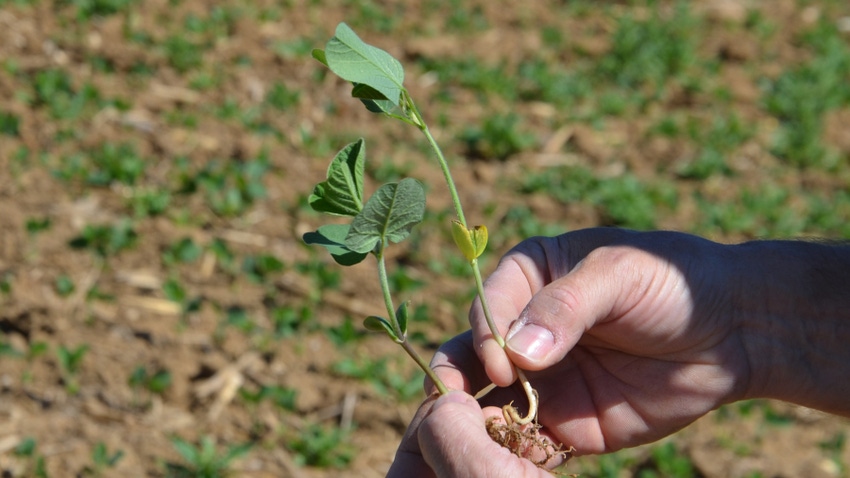
If you’re growing non-GMO soybeans, Bill Johnson, Purdue Extension weed control specialist, suggests raising management expectations and not cutting corners. “It may cost more than programs you’ve used in the past, and you need to manage carefully,” Johnson says.
The 2023 Weed Control Guide for Ohio, Indiana, Illinois, and Missouri contains information about controlling weeds in non-GMO soybeans. To learn more, contact your Extension educator.
Here are seven basic components for a non-GMO soybean weed control program:
1. Choose fields carefully. Pick fields with a history of crop rotation and effective weed control. The less weed seed remaining in the field, the better.
2. Rotate GMO and non-GMO. Ideally, only grow non-GMO soybeans in a field once in four years, Johnson says. Come back with corn in two years and GMO beans in the rotation.
3. Start weed-free. This requires tillage or effective fall or spring burndowns. Fall applications are especially helpful to control marestail in no-till non-GMO beans.
Here are spring preplant burndown recommendations for no-till beans if you don’t have marestail or applied a fall treatment. Options include:
glyphosate plus one or more of 2,4-D, Sharpen, Reviton or Zidua Pro
Gramoxone plus 2,4-D plus metribuzin
glufosinate plus 2,4-D
glufosinate plus metribuzin
If you didn’t apply fall herbicides and have marestail, choose from these options:
glyphosate plus 2,4-D; plus Sharpen, Reviton or Zidua Pro; plus metribuzin
Gramoxone plus 2,4-D plus metribuzin
glufosinate plus 2,4-D plus metribuzin
glufosinate plus Sharpen or Reviton plus metribuzin
glyphosate plus glufosinate plus 2,4-D
4. Use a broad-spectrum, residual preemergence herbicide. The residual package should control lambsquarters and marestail for the season and show activity on giant ragweed, common ragweed and waterhemp, Johnson says. “You’re also looking for activity on annual grasses,” he says. “Find premixes with two or three herbicides that have activity on key weeds.” The most likely active ingredients may be flumioxazin, sulfentrazone, metribuzin and pyroxasulfone.
5. Supplement these mixtures. The rate of each active ingredient in a premix is often reduced, Johnson explains. For tough weeds, add additional amounts of individual components to reach full recommended rates for that active ingredient for your soil types.
6. Follow a basic postemergence program. “Get weeds when they are small,” Johnson says. “Make that first post application when most weeds are 4 to 6 inches tall. Use a spray volume of at least 15 gallons per acre and nozzles that maximize activity of contact herbicides.”
Apply fomesafen plus a grass herbicide plus crop oil or MSO. Including AMS or 28% UAN revs up weed control but causes more crop injury. FirstRate, Classic or Synchrony can help control ALS-sensitive weeds.
Scout 10 days after the application to see if you need another application. Cobra or Phoenix work on late-emerging weeds and weeds not completely controlled.
7. Consider special weeds. You will likely need two applications with giant ragweed, Johnson says. Apply fomesafen on 6- to 10-inch weeds and come back with Cobra or Phoenix three weeks later.
Avoid growing non-GMO beans in fields with waterhemp. “They are often resistant to ALS and PPO inhibitors, eliminating post options,” Johnson says. If waterhemp is still sensitive to PPO inhibitors, follow the basic post program and include one of these for longer activity: metolachlor, Zidua, Anthem, Outlook or Warrant.
There are no effective post herbicides for marestail in non-GMO soybeans.
About the Author(s)
You May Also Like




